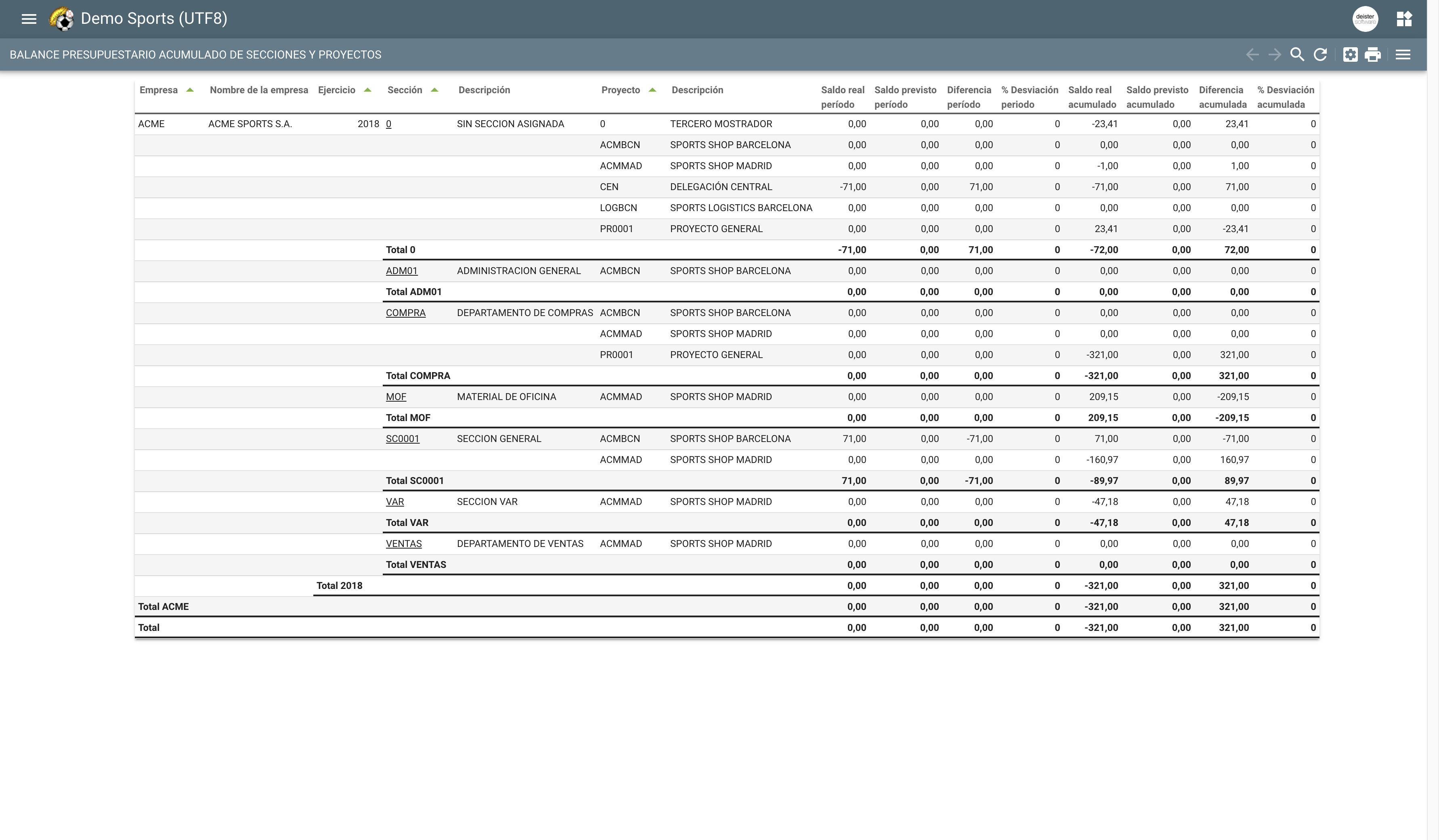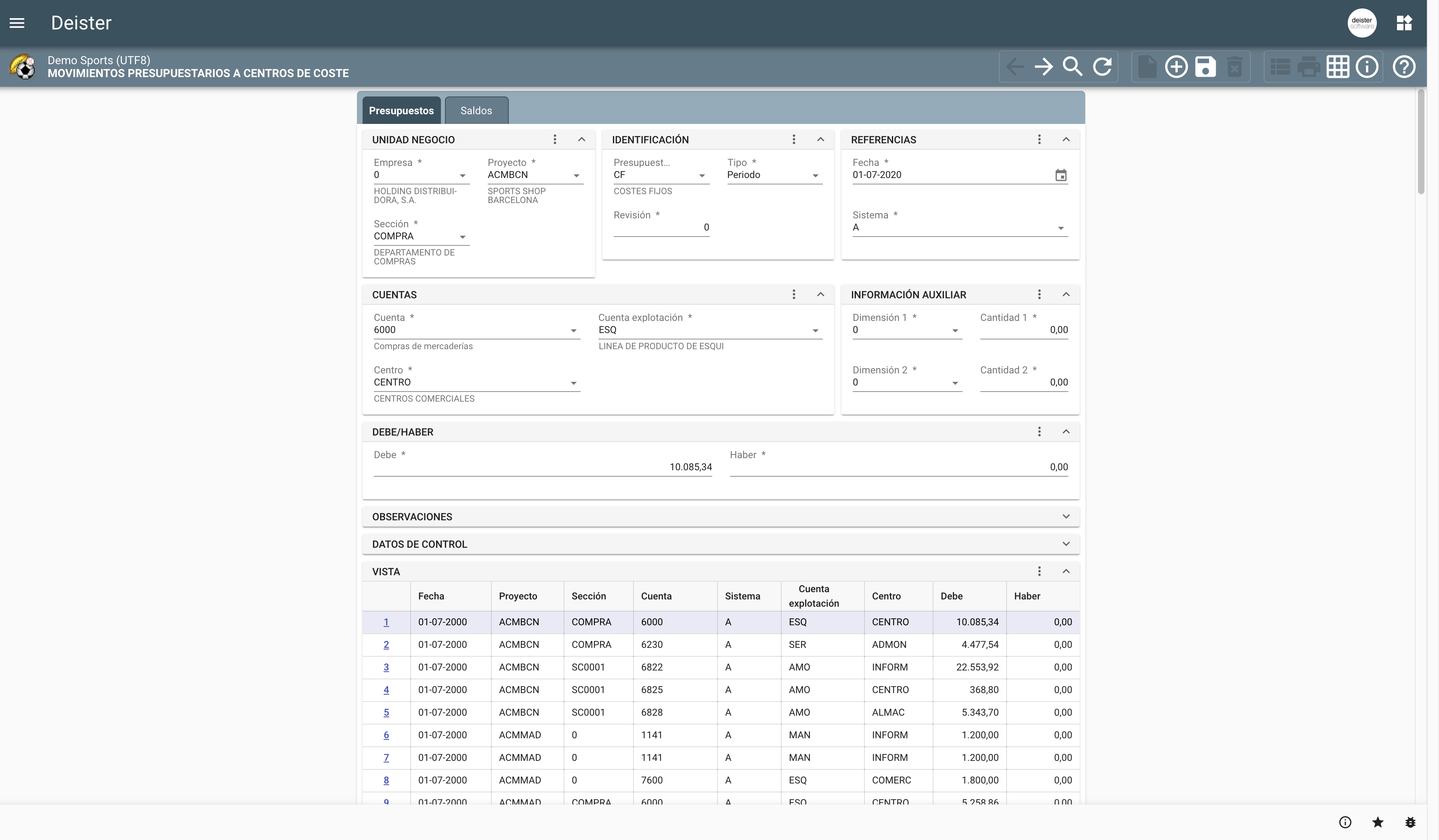Budgetary management
Budgetary management
Axional ERP/Finance – Budgetary Management provides a hierarchical environment for budget planning and control. It is built to cover analysis and monitoring needs when comparing account balances to forecasted amounts. Thus, this module has a powerful set of tools ready to oversee budget execution to any degree and control any deviation, as well as eventual modifications to the budget.
The current business environment has a clear focus on resource planning and control when it comes to business activities. In this sense, budget analysis can range from monitoring the overall performance of a business unit to quantitative assessment of projects related to the launch of a new product line, or even the introduction of a new business process.
Axional ERP/Finance – Budgetary Management gives your company solid features, which can be summarized as follow:
- Ability to deploy different budgetary groupings and levels. For instance, several budgets can be defined connected to each business branch, group, or department, which allows monitoring, analysis and evolution on either an individual or overall level.
- Automated tools to record budget items linked to the chart of accounts or to cost centers.
- Profitability analysis on costs and revenues with drill-down browsing to details within the accounting data model, reaching ledger accounts or sub-accounts.
- Budget copies, versions and updates are available as required, with full tracking inside the system showing changes applied to each revision.
- Yearly forecast obtained from a flexible budget structure, showing a mix of real changes to the business and successive updates to the budget. This supports an up-to-date forecast of year-end results.
- Multi-year forecasts. This is a helpful feature to enhance your business management, providing estimated multiple-year projections of profit and loss figures and constituting a highly valuable middle- and long-term planning tool.
Data model
The structure which identifies the source of transactions that result in accounting entries also helps us turn that basic data into an analytical tool for the business’s financial information.
Budget specific features
Some enterprises call for dynamic budgeting, in which the budgets of some accounts are altered according to the status of other accounts. For example, the budget linked to ancillary representation expenses may vary if it is obtained as a percentage of the company’s real sales volume.
In this sense, one feature that greatly enhances the budgeting module is the ability to set flexible budgets, in which we can allocate a budget item by a certain dynamic percentage rather than a fixed amount. This percentage can be defined either by the budget provided for a general ledger account, or by the balance of that account. This allows the variation of budget balances, adapted to the company’s current activity during the same period.
In most cases, key business figures evolve dynamically throughout the year rather than remaining static month by month. Moreover, different kinds of expenses or revenues have different patterns, and these seasonal variations must be recognized and managed when budgeting.
As such, percentage-based budget distribution is a tool to record amounts, deploying appropriate figures for each ledger account as the fiscal period progresses.
Axional ERP/Finance – Budgetary Management provides tools for the automatic generation of budgets based on current accounting or cost balances, according to the data model and the categories selected as sources for this forecast.
Increasing or decreasing previous budget amounts by a percentage can be performed over the whole year or over specific periods. Moreover, this variation can act selectively on specific budget items, based on data model entities.
Axional ERP/Finance – Budgetary Management is fully flexible and adaptive, managing the copying and grouping of preexisting budgets. These tools are equipped to deal with multiple versions and past versions.
Reports
Axional ERP/Finance – Budgetary Management supplies audit reports based on the data model structure. These reports can perform complex queries which factor in the data model entities of budget transactions.
Like in other areas, user-friendly but powerful capabilities enable the exportation of data from any table, form or statement to the most commonly-used formats for data analysis and management: Excel, PDF, CSV, txt, etc.
Accrual reporting is especially interesting because it allows us to get the total amount of deviation between real and forecasted balance, as well as the percentage of deviation from the budgeted balance.
With this report it is possible to get an annual forecast broken down by account and accounting period. This facilitates comparison between actual figures and budgeted figures. Starting from each balance amount, be they real figures or budgetary ones, it is possible to drill down and drill across to get the desired degree of detail for each item.
Notable benefits
- Agile control and analysis of deviations from budget planning, with support for further corrective decisions.
- Ease of budget updates and revisions. As many budget updates as necessary can be recorded in the system, tracking the changes made in each revision.
- Annual forecast features. Depending on the actual evolution of the business and subsequent updates/revisions to the budget period, up-to-date forecasts of year-end results are easy to obtain.
- Multi-year projections. It’s possible to build projections of income and expenditure accounts for several years, an invaluable support for long-term planning.
- Goal management. This is an essential tool for monitoring key objectives assigned to each head of department or line of business, product, or branch.
Empower your business today
Our team is ready to offer you the best services





